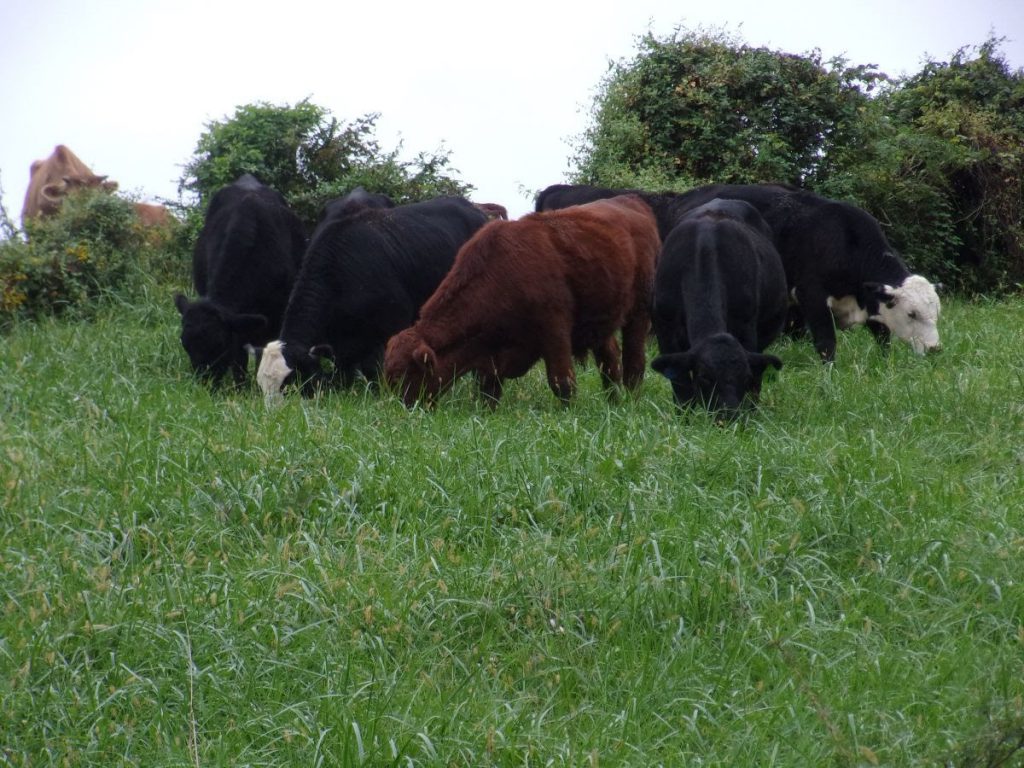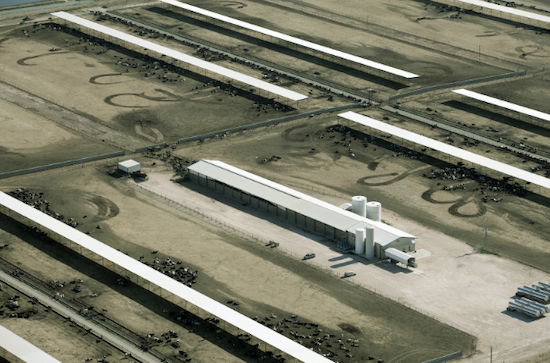6 Misleading Beef Claims…

This post is longer than most, because of the many angles to this discussion. BUT…I believe you’ll want to take a few minutes to read it, especially if you have ever paid a premium for food only to discover later that the product was inferior to the claims made.
Perhaps this has happened to you and you didn’t even know it. Unfortunately, it happens to thousands of consumers every day who are trying to feed their families who are wading through the plethora of quality claims and labeling tricks.
Navigating label claims can be daunting—even frustrating. But it doesn’t have to be this way for you.
Having raised grass-fed beef for a decade now, we’d like to offer you an inside look into this industry to help you cut through all the marketing fluff in your quest for truly grass-fed beef.
The little known fact is, beef is a BIG culprit when it comes to misleading claims.
Why beef? One reason is that compared to chicken or pork, beef has a higher perceived value and therefore there’s a greater temptation for companies to increase profits using claims. Plus, it’s more of a given that chicken and pork is raised indoors (conventionally and in the organic arena), which leaves less space in which to claim quality advantage.
Before we start down the list, keep in mind that every single day over 100,000 cattle are harvested for food in the U.S. and 97% are packed in crowded feedlots and fed grain. However, visit the grocery store and you’ll notice that almost every brand or retailer is claiming their beef is somehow different or better. Spend a few minutes scrutinizing this the next time you shop a grocery store and you’ll see what I mean.
The reality is that the beef industry has remained unchanged for decades and currently 85% of the beef sold at retail comes from the same four companies.
That being said, let’s get down to identifying the top 6 beef claims to look out for:
#1 “Grass-fed or 100% Grass-fed”
It’s important to know that much of the beef sold as 100% grass-fed at retail in the U.S is still being fed grain or grain by-products.
Technically, USDA standards do not allow for feedlot finishing or feeding of grain by-products for beef that is labeled as “100% grassfed”. However, the production protocols of the largest brands that claim “100% grassfed” on their labels, show that these brands allow for grain by-products including soy hulls, peanut hulls, beet pulp, DDGs (dried distillers grains) and many other non-starch grain by-products.
Strangely and unfortunately, only 16 Food Safety and Inspection Service (FSIS) employees at the USDA are responsible for verifying nearly 1 million label submissions per year. It’s simply impossible for so few people to ensure the accuracy behind each label claim.
Solution? When you see the claim 100% Grass-fed on a USDA label it cannot be trusted without visiting the actual farm.
#2 “Product of USA”
This is one of the most meaningless claims because all meats that are imported from abroad can legally claim “Product of USA” as long as it passed through a USDA processor, in which case it actually means “processed in the USA”. (Weird??!?)
This is one of the most egregious labeling loopholes in the food industry as it undermines your ability as a consumer to know where your food comes from. According to a recent report from the Stone Barns Center, 75-78% of all grass-fed beef sold at retail is imported from overseas and can be sold as “Product of USA.” The report goes on to say that “American consumers are often not aware that they are buying imported beef.” To many Americans, this has recentlybecome a big deal given the Covid crisis we’re in.
Solution? Whether buying an online monthly home delivery beef subscription box or visiting a local grocer, ask what state or country their beef is raised in.
#3 “Certified Organic Beef”
The reason I include “Certified Organic” in this list is due to the fact that most of the organic beef in the US is a by-product of spent dairy cows from organic dairies that mirror industrial style production practices. There’s been a lot written by folks like Michael Pollan on how the organic label has been taken over by the industrial food system and how the dairy industry is a major offender.
In what has been considered one of the largest fraud investigations of the organic industry, The Cornucopia Institute revealed the following photo of an 18,000 cow organic dairy operation in Stratford Texas.

This is not the picture most of us have in mind when we think of an organic dairy. The photo above represents where organic beef can come from and explains why retailers can offer this “organic” dairy beef at prices not much more than conventional beef. Keep in mind that “organically” produced beef can still be fed grain and confined to feedlots for portions of their life.
Unknown to most consumers, the “organic” grain that is fed to the cattle can still be raised with chemical pesticides. You can visit the USDA’s website for a full list of approved synthetic pesticides for organic production here (updated as of Jan. 15th, 2020).
Solution? As with many other organic foods, certified organic practices are now abused to the point where it’s easier to make a sound decision by knowing your farmers than to trust the label. The least you can do is to find out from the retailer—or in some cases, the package label—and call the farm to learn their practices. Or better yet, purchase directly from a farm you trust.
#4 “Humanely Raised Beef”
In recent years there have been an increasing number of 3rd party labels that are used by brands to convince consumers that their animals were raised and cared for humanely. Unfortunately, most of these certifications do very little to improve the actual welfare conditions on the farm.
Interestingly, the largest animal welfare certifiers include the Global Animal Partnership, American Humane, Certified Humane and others, but allow for conventional feedlot cattle finishing. For example GAP (Global Animal Partnership) is widely used by progressive grocery retailers. On the surface, their standards appear to be high…
However, what most consumers are unaware of is the fact that there are up to 5 levels of GAP Certification.
While many retailers like to promote/market the high standards of GAP 4 and 5 approval, the majority of products that are sold only meet the lowest levels for animal care. One could argue that the higher levels exist to create a higher perceived value for the overall label claim.
While animal welfare is difficult to enforce at best (a farce at worst) because farms must carry out welfare practices daily – yet are only inspected only once per year at best.
Solution? Unfortunately, this one is nearly impossible to verify without knowing—and visiting—the farm where the beef is raised.
#5 “All-Natural vs Naturally-Grown Beef”
This can be a very confusing assertion as both of these claims have a wide span of variations—with many loopholes— when applied to beef production practices.
The claim “All-Natural” only means the meat was not fundamentally altered during processing or does not include any artificial ingredients (FYI, the word “artificial” is also stretched to the extreme in many cases). This claim has nothing to do with the farm’s production practices, which means beef labeled as “All-Natural” can come from cattle that were raised in any environment.
However, when you see the term “Naturally-Raised” it does mean the cattle were raised without the use of artificial hormones or animal by-products. Of course, this claim does not exclude the use of drugs and still allows for cattle to be raised in feedlots, and allows for artificial ingredients to be added in processing.
Solution? Know where you beef comes from and how it’s raised. I know this can seem like a daunting task, but not impossible.
#6 “Locally Sourced Beef”
In many regions of the country, states have introduced labels such as Indiana Grown, Kentucky Proud, Michigan Made and others. These programs were started with great intention, but allow any product that is processed (not grown) within the state to qualify for these labels.
For example, branded meat companies can source cattle from any state and still qualify for the Indiana Grown label as long as it was processed within the state.
In conclusion…
Always remember this: Health-conscious consumers like you and I use food labels to evaluate and judge food integrity while food brands use food labels as a way to increase profits and sales.
To be honest, food labels are one of the most unreliable methods for judging quality—after all, it’s just a paper-thin label that’s no better than the integrity and honesty of the company behind it. It’s a trust issue, and trust cannot be labeled, regulated, or enforced.
At Pasture to Fork, we believe that the only way we will ever have a food system of integrity is if we first have people of integrity and transparency. This includes farmers, law-makers, and consumers alike.
And that…. is The View from the Country.
